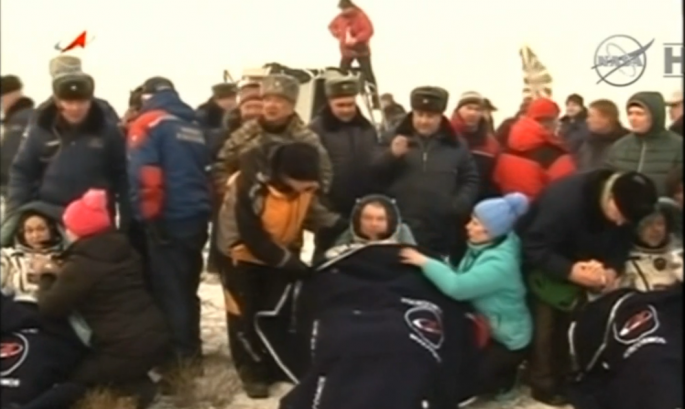A Soyuz space capsule had landed safely on a snow-covered steppe southeast of Zhezkazgan. On board were NASA astronaut, Barry "Butch" Wilmore and Russian Cosmonauts, Alexander Samokutyaev and Elena Serova after the trio spend 167 days on-board the International Space Station.
The capsule landed in an upright position or vertically at 2207 Eastern Time Thursday, approximately 92 miles from the town.
The trio blasted from Earth on September 26 and spent 167 days in space more than 70 million miles away from Earth, NASA said in Yahoo News. NASA official commentator, Rob Navias said "Expedition 42 is back on Earth."
Elena Serova is the first Russian woman who served on a 100 billion dollar ISS, a consortium of 15 countries and her first space flight too. While station commander Wilmore and flight engineer Samokutyaev is their second space flight.
Astronaut Terry Virts from NASA took over the command from Wilmore together with Russian Cosmonaut Anton Shkaplerov and Italian astronaut Samantha Cristoforetti will be manning the ISS until the middle of May.
Deputy Prime Minister Dmitry Rogozin said on twitter that the three crew were all in good health after they were retrieved from the capsule. Crew members were all smiling as they were lifted out by the recovery team from the Soyuz capsule as shown on television. They were immediately wrapped in a thick blanket and loaded into the waiting all-terrain vehicles.
Rogozin further said that the next crew will be launched on March 27 from Baikonur, Kazakhstan with US astronaut Scott Kelly, Russian cosmonauts Mikhail Kornieko and Gennady Padalka.
NASA said that Kelly and Kornienko will stay at the International Space Station for the whole year instead of the standard six-month mission, reported by Reuters. The purpose of their longer stay is to collect valuable biomedical data that will guide NASA for a future deep space travel and longer space missions.



























